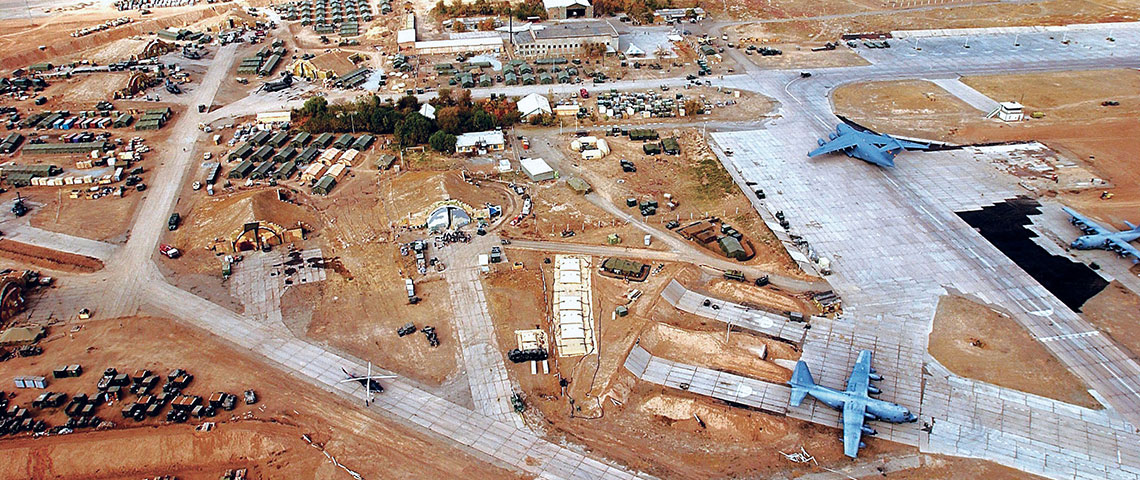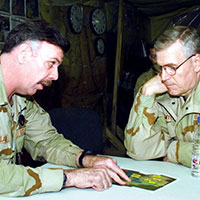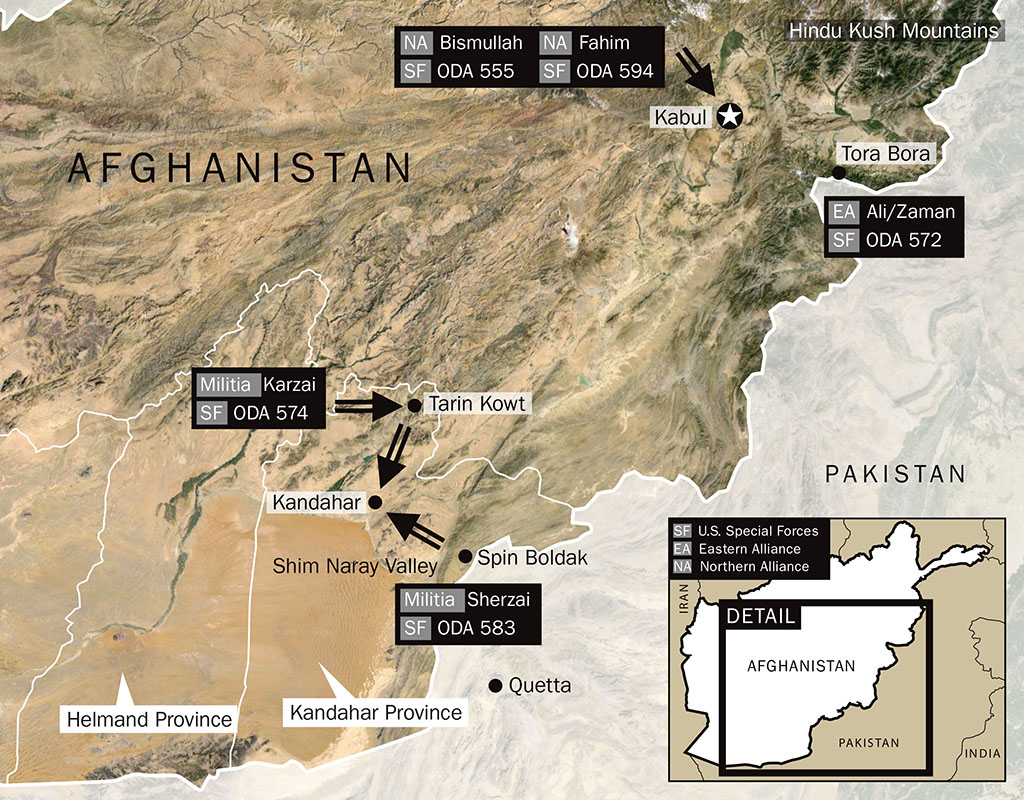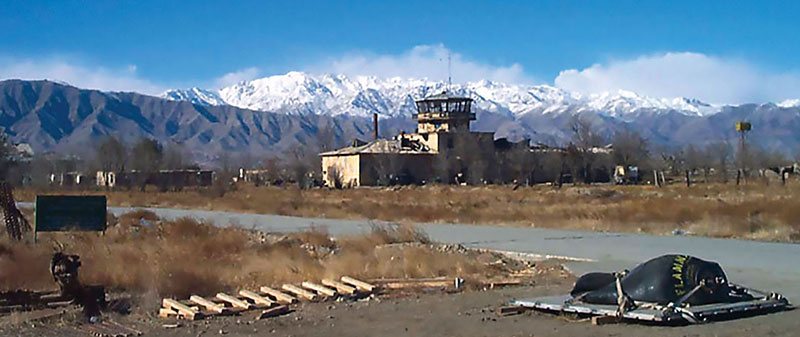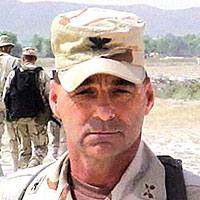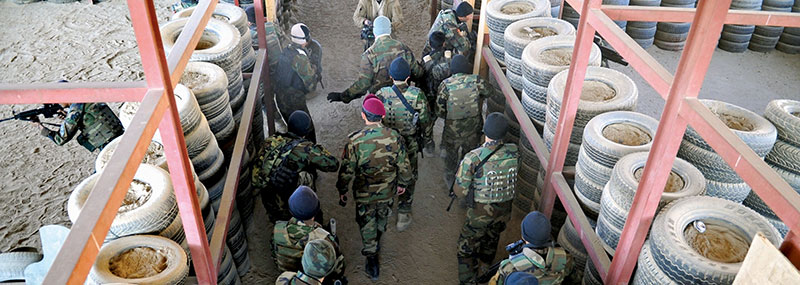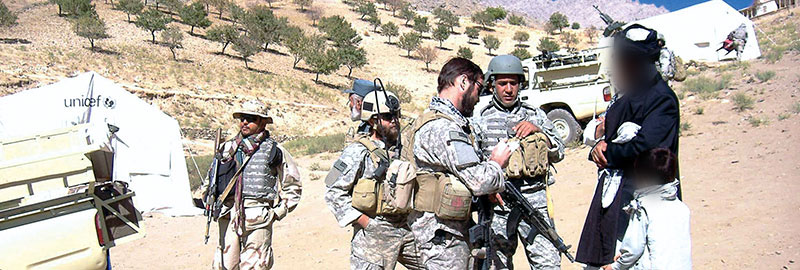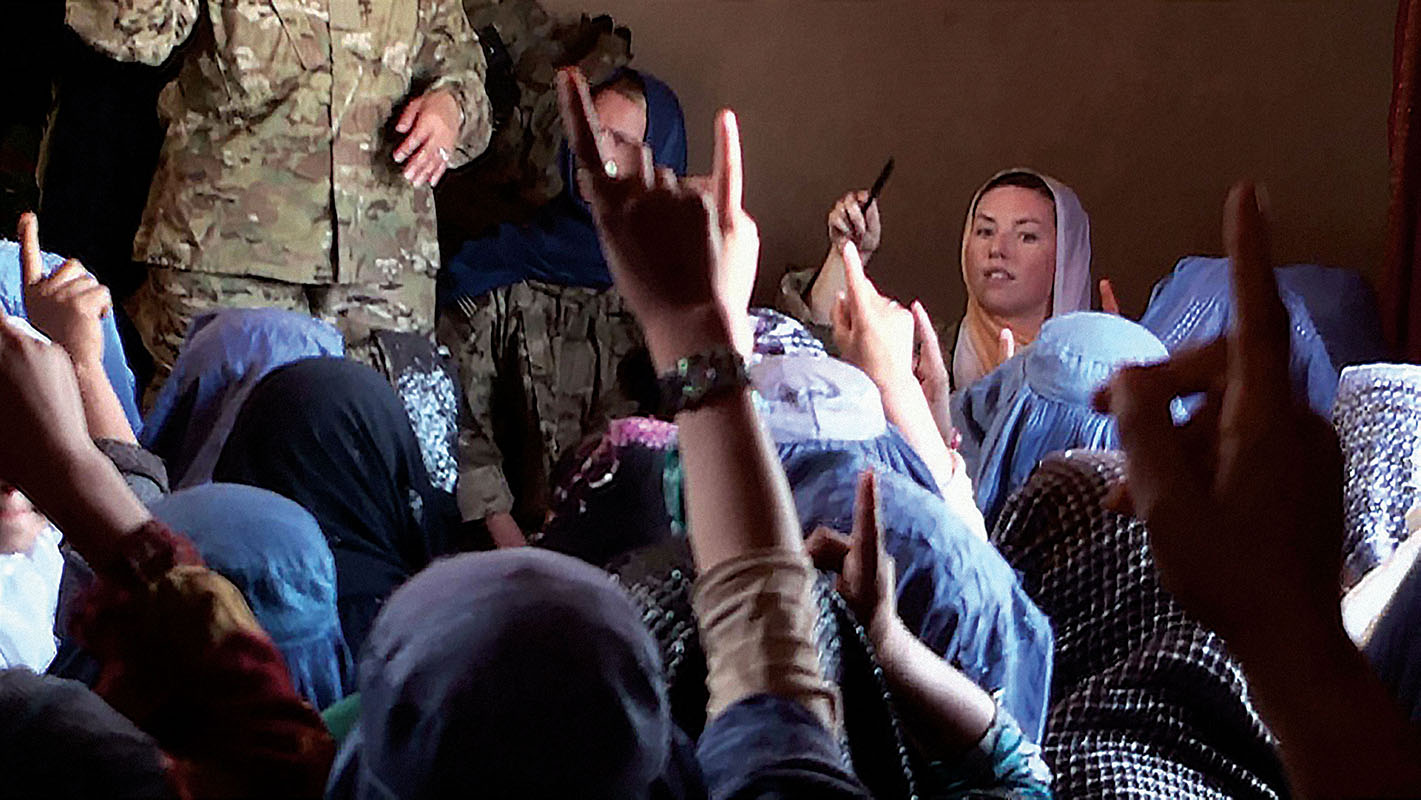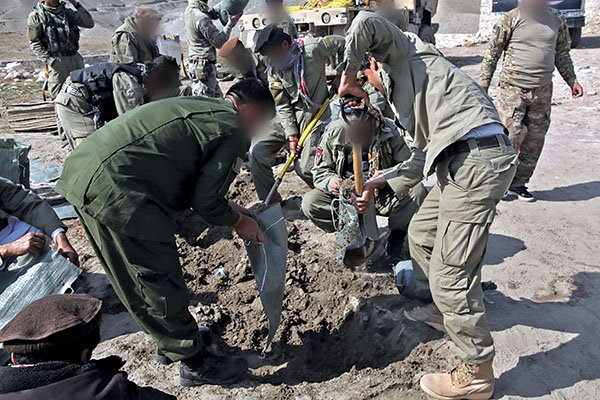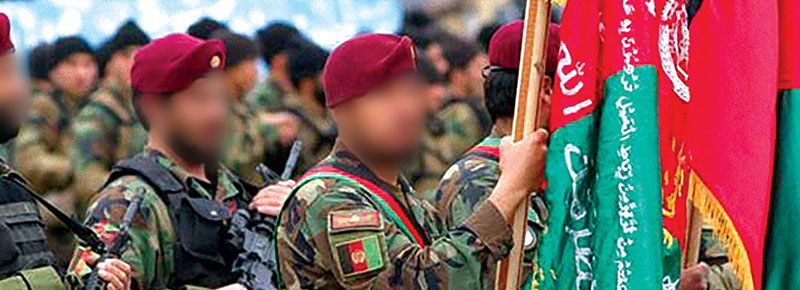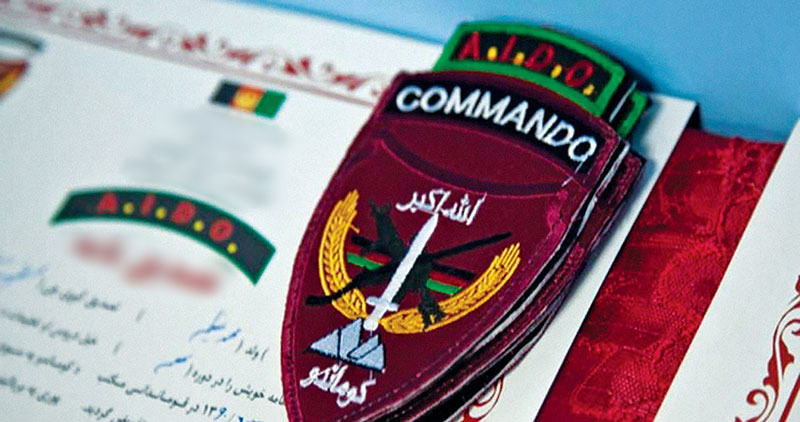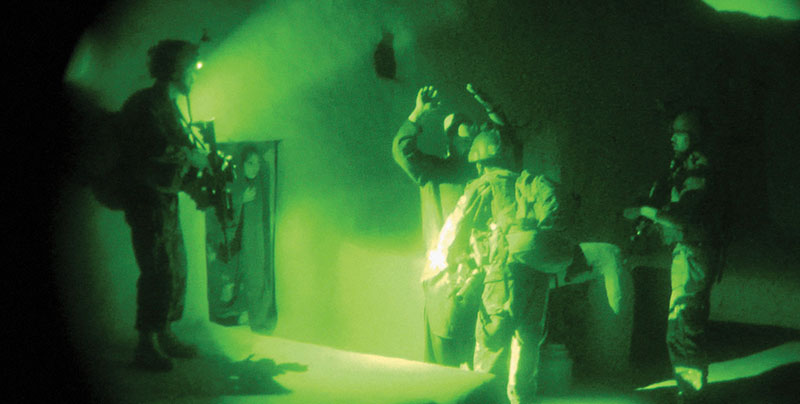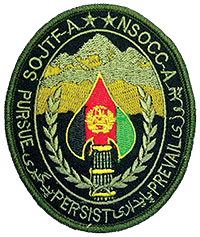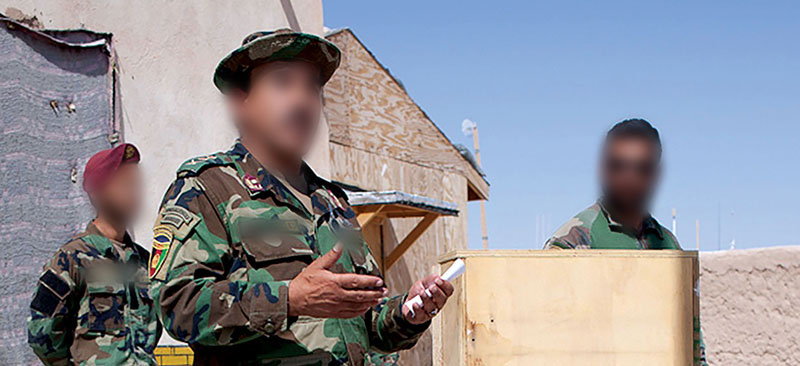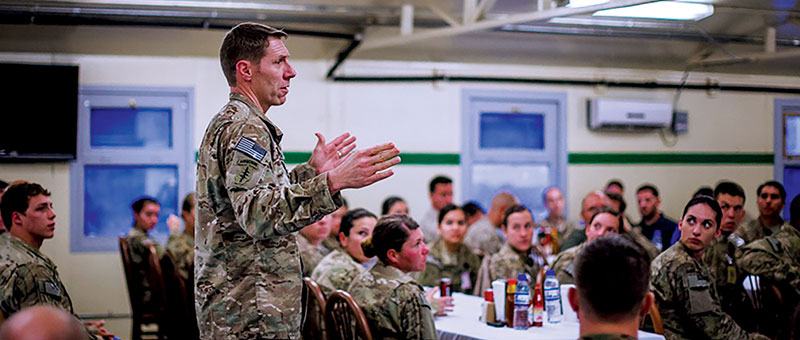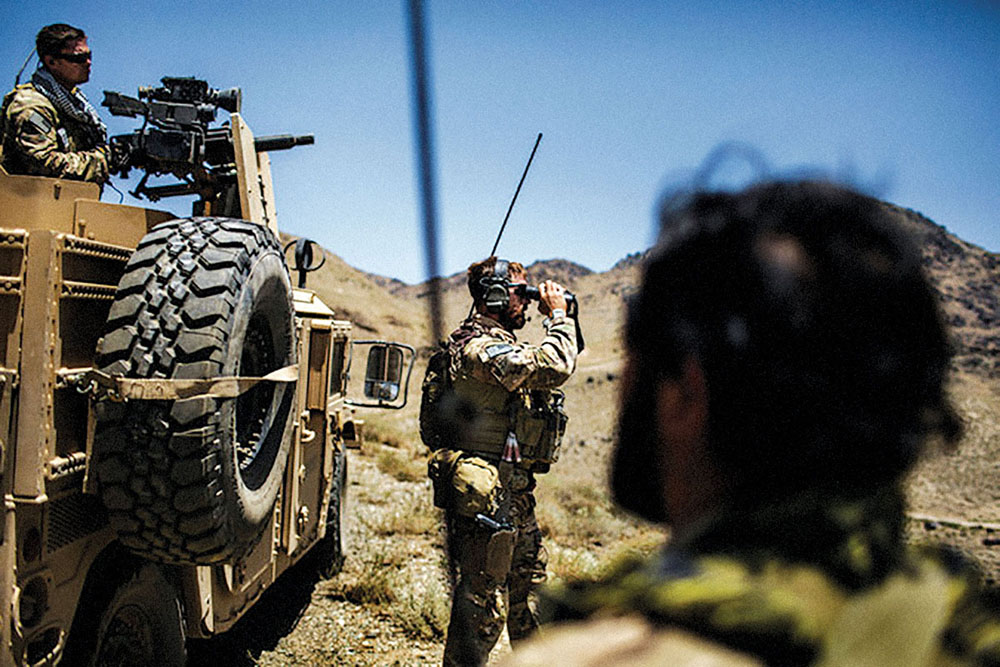NOTE
*IAW USSOCOM Sanitization Protocol for Historical Articles on Classified Current Operations, pseudonyms are used for majors and below who are still on active duty, unless names have been publicly released for awards/decorations or DoD news release. Pseudonyms are identified with an asterisk. The eyes of personnel in photos are blocked out when not covered with dark visors or sunglasses, except when the photos were publicly released by a service or DoD. Source references (end notes) utilize the assigned pseudonym.
SIDEBARS
Coalition Special Operations Forces
Provincial Recontruction Teams
TAKEAWAYS
- Validates the doctrinal model for command and control of Joint SOF
- Highlights the inherent strengths of building a ‘framework’ around an SF Group
- Advantages of utilizing existing command selection processes
- Maximizes on ‘reachback’ capability to fill gaps and preserve force
- Demonstrates the versatility and flexibility of the CJSOTF-A in extended combat environments
- Successfully got Afghan SOF to assume responsibility as the primary engagement force
Southeastern Afghanistan, 2003
Weather-wise, 25 August 2003 began as it had in the past few weeks. As the sun cleared the mountains temperatures were in the 90s and would peak above 100 degrees Fahrenheit. The air was heavy with fine dust that clung to everything as vehicle-mounted soldiers of Operational Detachment - Alpha (ODA) 2056 (20th Special Forces Group [SFG]) scanned the area with binoculars. They were responding to the night ambush of an Afghanistan Militia Force (AMF) near the village of Day Chopan in southeast Afghanistan. The AMF had captured a ‘live’ enemy radio and the intense ‘chatter’ indicated the presence of a large enemy force in the hills north of Day Chopan. ODA 2056, mounted in two Land Rovers, a Toyota HiLux pickup truck, and an unarmored high mobility multi-wheeled vehicle (HMMWV) (military utility vehicle known as a ‘Humvee’), was accompanied by two vehicles of AMF soldiers.1
At 0630 hours outside the small settlement of Da’udza’i, ODA 2056 received small arms fire from some hills two hundred meters on their flank. The SF team took immediate action and assaulted the attackers, who pulled back. Surprisingly, the Americans were re-engaged by even greater numbers. The Taliban were determined to keep friendly forces out of the area. While engaging the enemy, the team leader radioed details of the contact to higher headquarters. Recalcitrant enemy intentions raised suspicions at the CJSOTF-A. When the Joint Tactical Air Controller (JTAC) requested close air support (CAS), the Joint Operations Center (JOC) directed two U.S. Marine Corps AV-8B ‘Harrier II’ attack aircraft to support the ODA. They also forwarded the ODA 2056 contact report to Task Force (TF) 180, the headquarters for all American forces in Afghanistan, to add to their targeting cycle. The ‘Harriers’ made multiple bombing runs, temporarily reducing the enemy’s volume of effective fire.2
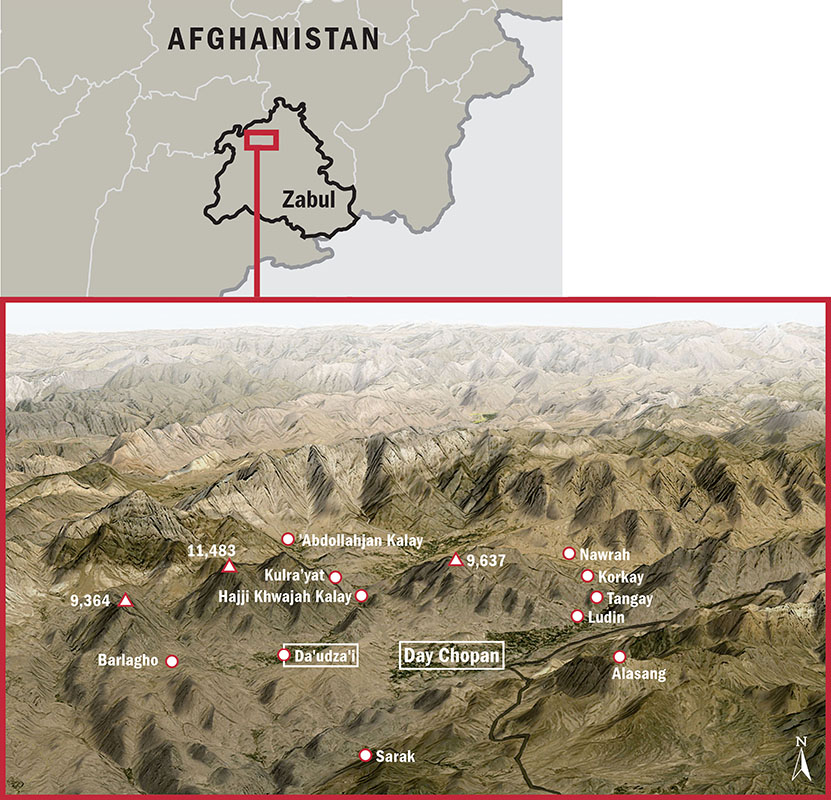
At the end of the day when ODA 2056 reported 14 enemy dead and many more wounded, the Taliban were stubbornly maintaining contact by replacing their losses. The CJSOTF-A had been getting more contact reports from other units operating in the Day Chopan District. These reports indicated the presence of a very large enemy stronghold. As the traffic volume grew at JTF 180, conventional U.S. Army forces made plans to exploit the SF findings. Special reconnaissance (SR) ODAs ‘fixed’ a substantial enemy force, prompting JTF 180 to plan, coordinate, and execute a major coalition offensive action that was labeled Operation MOUNTAIN VIPER.3
For the next two weeks SOF elements from CJSOTF-A provided the ‘eyes’ that pinpointed the Taliban forces and kept them ‘fixed’ with CAS to enableconventional ground force attacks against the stronghold in Day Chopan. MOUNTAIN VIPER became one of the most successful operations of 2003 in Afghanistan. SOF elements and coalition forces teamed up to inflict heavy casualties on the Taliban, denying them a base of operations in Zabul Province.4 Iraq reduced U.S. military interest thereafter.
This article covers the creation of the CJSOTF-A in early 2002, general operations for 13 years, and its deactivation in 2014. Organized by Operation ENDURING FREEDOM (OEF) phases, the key operational events which caused the CJSOTF-A to assume new missions are highlighted and placed in context with operational and strategic decisions redirecting efforts. While how the command and control functioned in CJSOTF-A is central, what happened at levels above and below makes the rationale for role and mission changes more understandable.


